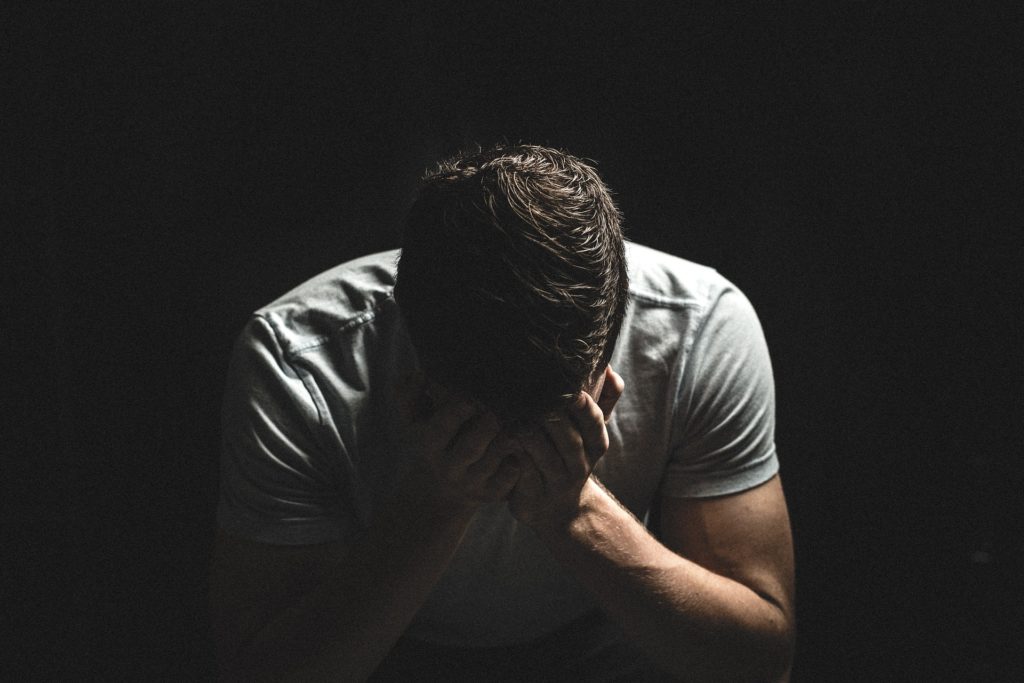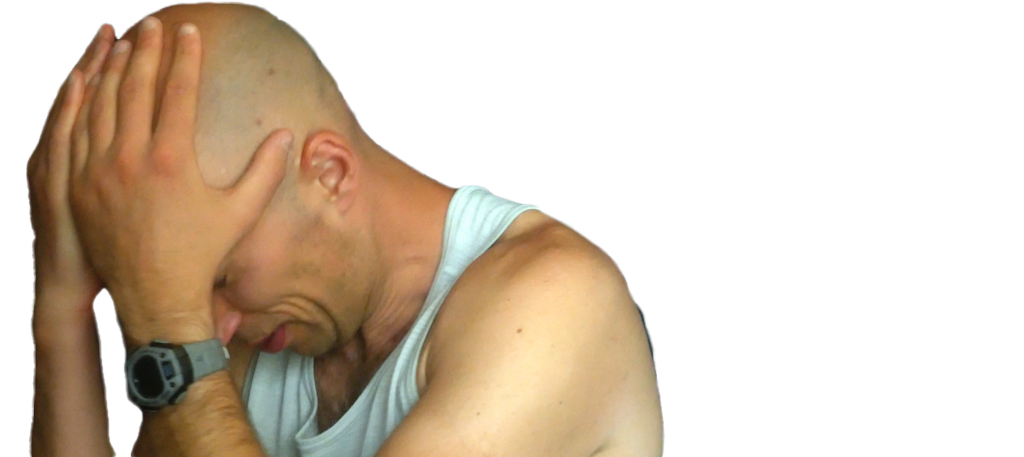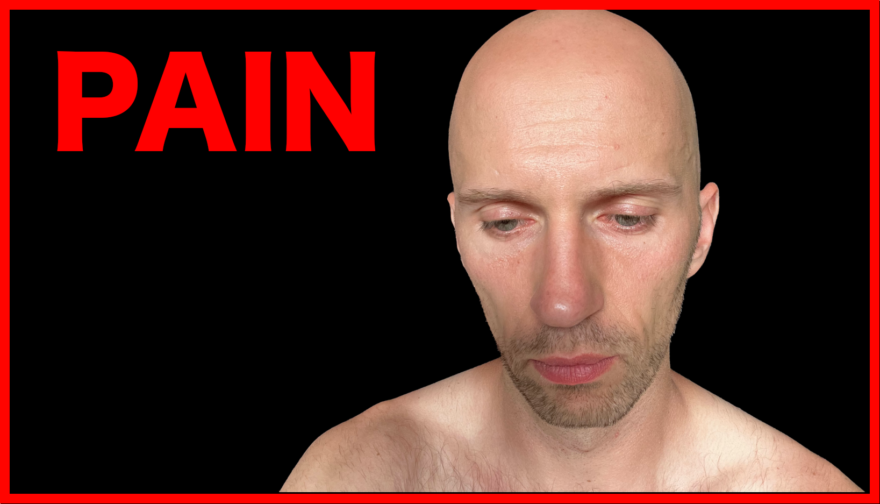Table of Contents
The hardest thing you can do if you are in chronic pain
Chronic pain can be one of the hardest conditions to overcome, though I think there is one variable that separates those who are stuck and those who breakthrough.
But this obstacle is one of the hardest things to overcome on the journey toward pain freedom.
Don’t worry, I’ll outline what this issue is, and provide some ideas on how you can overcome it, getting you closer to your goal, a goal of being pain-free.
Check out the post and video below to learn more.
Pain freedom
I am about to have a very difficult conversation with you, and many of you might not be ready to hear what I’m about to say, and that is okay.
But if you want to eclipse chronic pain, then read on.
Many have asked me about how I can dive into biomechanics without getting overly obsessed about it. Obsessing over how I look, my asymmetries, my lack of movement. How can we both learn biomechanics yet not go down a negative path?
I had seen a couple old clients of mine who I hadn’t seen in a couple of years. They were in Las Vegas and wanted an assessment.
Both of these clients would have been classified as persistent pain, as they had been dealing with their respective pains for well over three months; working with a wide variety of practitioners in the process. Both had improvements here and there but didn’t get over the hump.
Until today.
It turns out that both of them were actually doing very well. Both had significantly reduced amounts of pain, and were able to get back into training in the gym with minimal issues. They also generally seemed to be happier and in better spirits.
And I asked them, I said, “It has been a couple of years, what have you guys done in order to essentially get over the hump on this?” And the answer was they just went for it.
They started training.
They stopped consuming a crazy amount of biomechanical content, among other things.
They dealt with some of the mental aspects that go on with persistent pain.
They changed their mindset, started meditating, began training (using some sound biomechanical principles), and made A TON of progress in the process. More so than the hyperfocus on addressing asymmetry and biomechanics.
Although I was super excited about their progress, it really made me sad in a way, because their success is rarer than you think.
Very few people get over the hump.
Very few people recognize that the rate-limiting step to them being in persistent pain, and moving on towards pain freedom, is likely some of their self-limiting beliefs, habits, and thoughts that they have developed while being in persistent pain. They get stuck looking for that one fix, incessantly researching what could be the cure.
Ultimately, that process, mindset, superpower, is going to be the limiter of achieving pain freedom.
The hyperfocus and vigilance on how they feel, look, and move creates this negative feedback loop.
How do I know this? Because I am one of you.

I’m one who also obsesses over things.
Fortunately, I have been in persistent pain only one time in my life–six month groin/abdominal strain. But the obsessiveness has bled into other areas of my life. Hell in some aspects, it’s a superpower.
Obsessing led me to excel as a physical therapist. It helps me learn in-depth topics, which is good.
The neutral aspect of obsession could be me watching a movie I like, hitting up IMDB and learning EVERYTHING about it.
But it has its negatives.
This superpower has led me to deal with eating issues, body dysmorphia, difficulty with certain relationships, obsessing over negative thoughts that impair me from doing my day-to-day tasks, and even obsessing about people, leading to unhealthy relationships.
It is a power that I think a lot of us who deal with things like persistent pain, or really any factor can wield to our advantage to help do wonderful things in the world.
But if we get stuck on the wrong stuff, such as endlessly researching the fix to our pain or how to look/feel a certain way, then we will fail.
We have to come to grips with this superpower and use it in a productive manner. Though as much as I love biomechanics and movement, it’s not the sole cause or fix of persistent pain.
Research has demonstrated the following factors can contribute to persistent pain development:
- Fear
- anxiety
- catastrophization
- gender
- pain
- age
- personality
- environment
- genetics
- epigenetics
- sleep
- probably more that I’m missing
Biomechanics was not on this list.
My point by showing you this is that pain is complex. SUPER COMPLEX. In fact, it might be overwhelming. Where do we even start?
But it can also be freeing in a way because there are also many different potential paths to success in achieving pain freedom.
There is this great book that I read recently by Dr. Aziz Gazipura called Not Nice, where he mentions his experience with persistent pain–an ankylosing spondylitis diagnosis. He couldn’t move, couldn’t exercise, and had seen a TON of practitioners and tried several unsuccessful treatments. Sound familiar?
It was not until he had a mindset change within himself, instead of focusing on pleasing others, focusing on himself, admitting that he is good enough, accepting who he is, that he was actually able to overcome his longstanding pain. Just from a shift in mindset, and changing the way that he felt about himself. It had nothing to do with improving his hip and thoracic mobility.
So, my point by bringing up that story is there are so many ways that you can achieve pain freedom, that we just cannot be laser-like focused on only one thing, in this case, biomechanics.
So what do we do Zac? Should we stop consuming your YouTube channel and just go ahead and start meditating and hope for the best?

Well, it does not mean that the biomechanics stuff does not play a role or cannot be useful. In fact, when I saw these two folks who had overcome a big hump in their persistent pain, we did a lot of biomechanical stuff and they seemed to get even better. Not saying that at all.
But what I am saying is we likely have to broaden our focus on the multitude of other factors that we could be addressing that could potentially enhance our ability to get out of longstanding pain. Because we really do not know which variables are going to get us over the hump.
But I think there is one major variable that you can address today that involves taming the obsessive superpower that you and I both share. It is going to be a crucial step to getting you over the hump and towards pain freedom.
And that folks, is establishing a purpose in your life beyond your pain.
There was a seminar I took several years back by Dr. Brian Walsh, and one of his lectures really stood out to me. It was on purpose and community. He stated that a person with a purpose greater than themselves (which could involve things ranging from a career to a religion to anything really), have a longer lifespan and reduced disease risk–even if socially isolated!
How cool is that?
Establish a purpose in your life, and you have automatically made your health better, and this is where I think a lot of individuals who are in persistent pain, who are focusing solely on how to get out of pain, is what becomes their purpose. Their rate-limiting step.
You have to shift your purpose.
It cannot be just about getting out of pain. There have to be other things in your life that you can bring that obsessiveness, that hyperfocus towards. Until you have that, you are probably going to be stuck where you are.
It might seem daunting at first. Hell, you might not be able to physically do much when you in pain, but your purpose can really be anything. It could be being a good spouse or parent, building a business, learning how to code, produce content, a religion, LITERALLY ANYTHING. Anything beyond the biomechanics. Anything beyond your pain.
You have to find something that is bigger than you and how you feel. That makes an impact on others.
That is probably the most crucial step that people need to do to really get out of longstanding pain, and it is what my two clients did, and it’s what clients who have their pain as their purpose do not do.
It’s tough, because having that shift in your purpose, which a lot of times can be deeply ingrained in who you are, can be one of the most difficult things you’ll do. But if you do not do it, you are likely going to be stuck in the state that you are in.
Maybe you aren’t as ambitious with the potential purposes I had above, and that’s totally okay. Perhaps there is something that is even easier where you could start: finding a community.
Dr. Walsh mentioned the relationship between pro-social settings and isolation, and it’s relationship to inflammation.
If you are in a pro-social situation, meaning that you are surrounded by a lot of people, you actually have a boost in your immune systems activity and a reduction in your inflammatory systems activation. Conversely, if you are socially isolated, those two things reverse. You have a less robust immune system and you have a much more robust or hyper-aware, hyperactive inflammatory system.
If you think about this from like caveman days, it kind of makes sense. People are gross and spread germs. I need my immune system to be kicked into high gear so I do not catch various illnesses. Conversely, those same people can take care of me when I injure myself, and so the need to have a robust inflammatory response is less because people are going to attend to my wounds.
Conversely, if I am socially isolated, I am not around as many people. So, I do not need a really extravagant immune response, because I am not going to be exposed to as many pathogens. But if I sustain an injury in the wild, I do not have anyone to take care of me. So, I need that to heal up as quickly as possible. In that situation, it makes sense that my inflammatory response would be much more robust.
But we are no longer cave people. Yet, the systems that benefited us back in the day are still in place. If we socially isolate ourselves, we are more likely to have higher amounts of inflammation within our bodies. It is far too common that those in persistent pain lack a social support system they can latch onto. Building this group could be the first step to focus on.
Finding a friend group, finding a community where you share like-minded things, finding a community of some sort that you can call on for support, and ideally, it is going to be in person. Because if you do that, you get a twofer as we say in the Midwest–you get the benefits of reduced inflammation by being surrounded by people who you like, and you also get to establish a purpose, which could be being a good person to those who you care about.
It is a critical step that a lot of people gloss over when they are dealing with being in long-standing pain, and to me, it can be one of the first steps that you can take that I think over the long term is ultimately going to help you be successful in achieving pain freedom.

Right on Big Z, your message hits home
Much appreciated big fam! I hope you are well 🙂